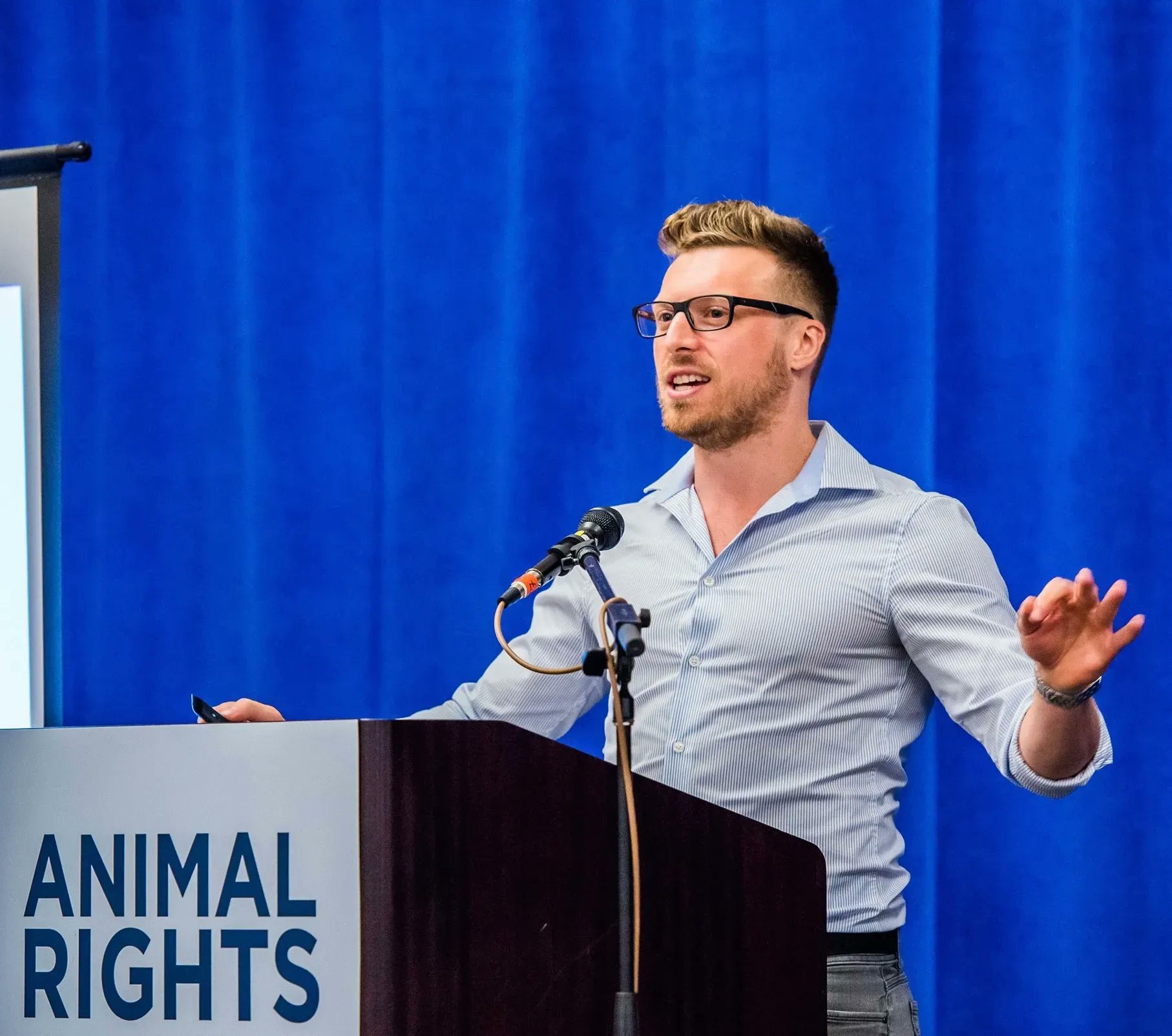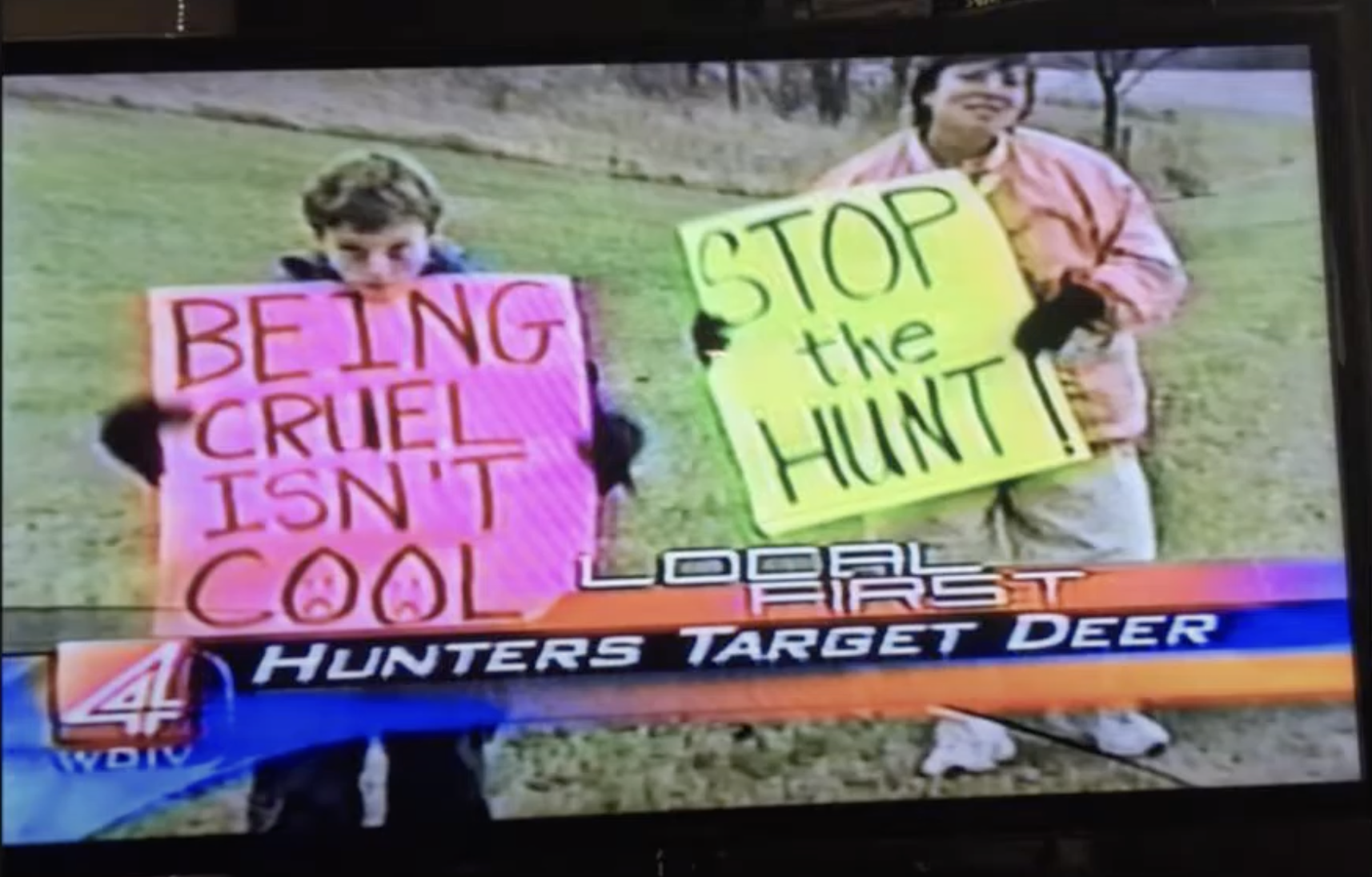To better understand how the lessons John has learned throughout his journey as a vegan activist inform his approach today, we covered a variety of topics regarding how he makes a positive change for the animals.
Advice for new activists
John’s attitude towards new activists was unrelentingly optimistic and encouraging. Regarding those looking to start making a difference, John said, “If you are a new vegan and you want to make a difference for animals and you don’t know where to get started, that’s fine. Most people don’t know where to get started!”
He then pointed out that we now live in a time where there are more ways than ever to make a positive difference, and we have the ability to pick the ways that feel most accessible to us. One strategy that John recommended was social media outreach, as it allows people to make a difference from wherever they are.
The pervasiveness of social media also means a greater potential to reach large numbers of people with a positive message for the animals. John, who in 2022 surpassed 100,000 followers on his Twitter account (
@JohnOberg), has leveraged social media to deliver his activist work to millions of people and plans to continue using it to raise consciousness about animal suffering and the ways we can alleviate it.

John speaking at an event in support of the animals.
John also emphasized the value of engaging with activists in your local community, which the internet has again made easier than ever before. By using platforms like Facebook groups and Meetup.com, activists can connect with like-minded people to collaborate and make change locally. This makes it possible for new activists to attend events that have a variety of approaches such as protests, vigils, leafleting, food distribution, and more. These platforms also give activists the ability to create their own events and use their creativity and motivation to organize people around a common cause.
He also noted how combining outreach strategies can sometimes amplify them both. John pointed out, “So for example, if you are leafleting, you could leaflet through the weekend and hand out a few hundred leaflets — and then you could post about that on social media to reach even more.”
Exciting technologies and what they mean for veganism
With the sales of plant-based dairy and meat products on the rise, and the topic of veganism becoming more prominent in general culture, we asked John about what he is excited about for the future. John emphasized that there are ways to help animals that aren’t strictly activism-focused, such as getting behind the movement toward plant-based proteins and cultivated meat products. He pointed out that in the past, new technologies emerged that massively reduced certain forms of animal suffering. The era of wide-scale use of horses for transportation was essentially brought to an end by the adoption of automobiles, as people no longer felt like they had to rely on animals to get around. Plant-based replacements for meat, eggs, and dairy, John argued, could essentially achieve a similar thing for animal farming.
John noted that there currently exist many groups, such as the
Good Food Institute, who do this essential work to develop and promote the technologies that reduce society’s reliance on animal agriculture. He argued that by promoting these groups and technologies, in combination with working to change the way people perceive animal suffering to begin with, we can build a meaningful path forward to create a kinder world for animals.
Advice for new activists
As an activist, John has always taken a compassionate and kind approach to education. He has stated in the past that activists should never be rude or mean to others — as he puts it, “Nobody looks at somebody who is being a jerk and says, I want to be like that person.” Given the inherent challenges in communication that social media presents, we asked John how he approaches compassionate education in an online space.
John said, “I try to walk this fine line where my content and presence is appealing enough to vegans to get them excited, but not so antagonistic to non-vegans that they would be turned off. A thing that I say often, is that we need to win hearts and minds, not arguments and debates. It’s easy to win a debate, it’s easy to win an argument, especially when talking about animal activism, but how can we actually win others over? I have found that taking a gentler approach is more likely to get people to open their hearts and minds to my message, to not make them feel judged. And why should I make them feel judged? I was in their shoes 15 years ago and I loved animals.”
John pointed out that it was through people compassionately pointing out the conflict between his love for animals and his choice to consume them that he was able to truly achieve meaningful change. As an activist, he tries to be this source of compassionate education for others, to help them align their values with their behavior, and to be as approachable as possible so that he can maximize the good he does for the animals.




